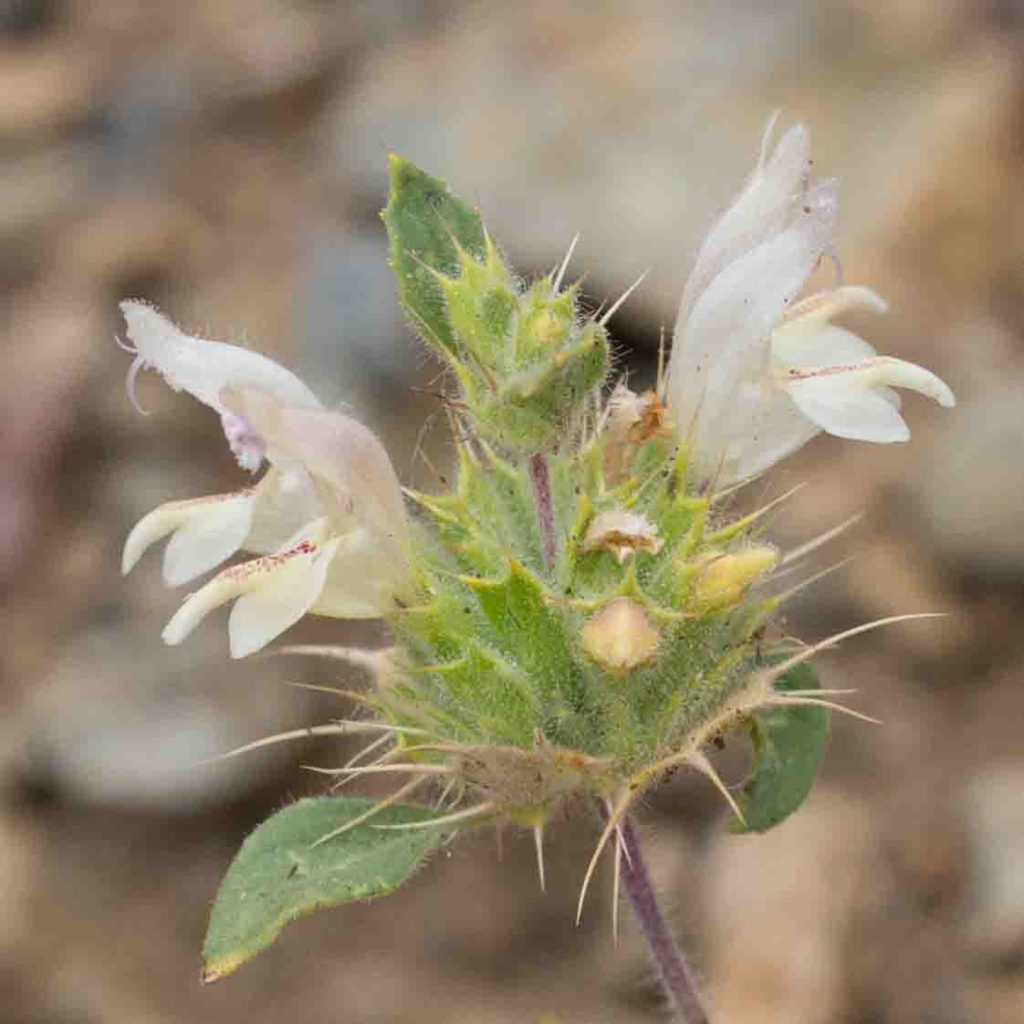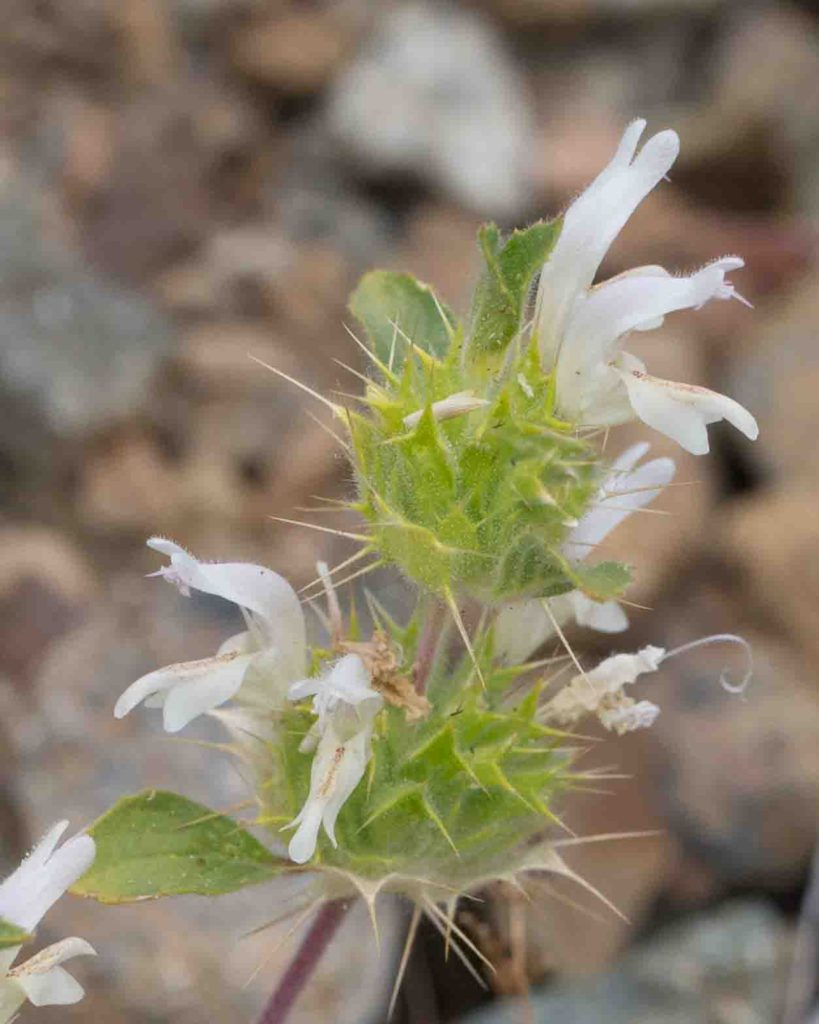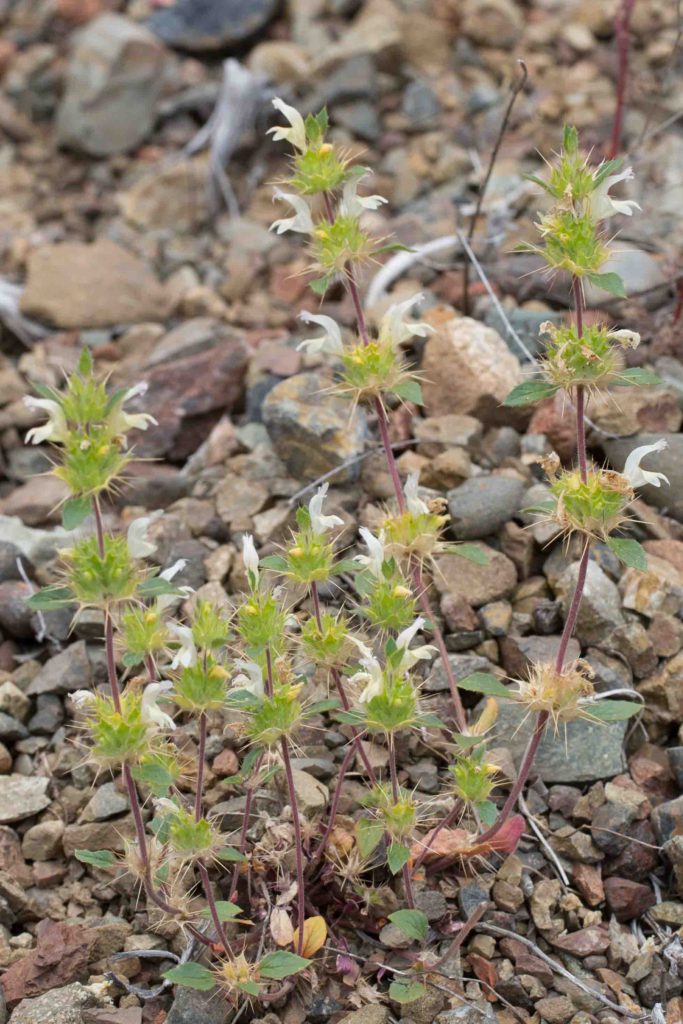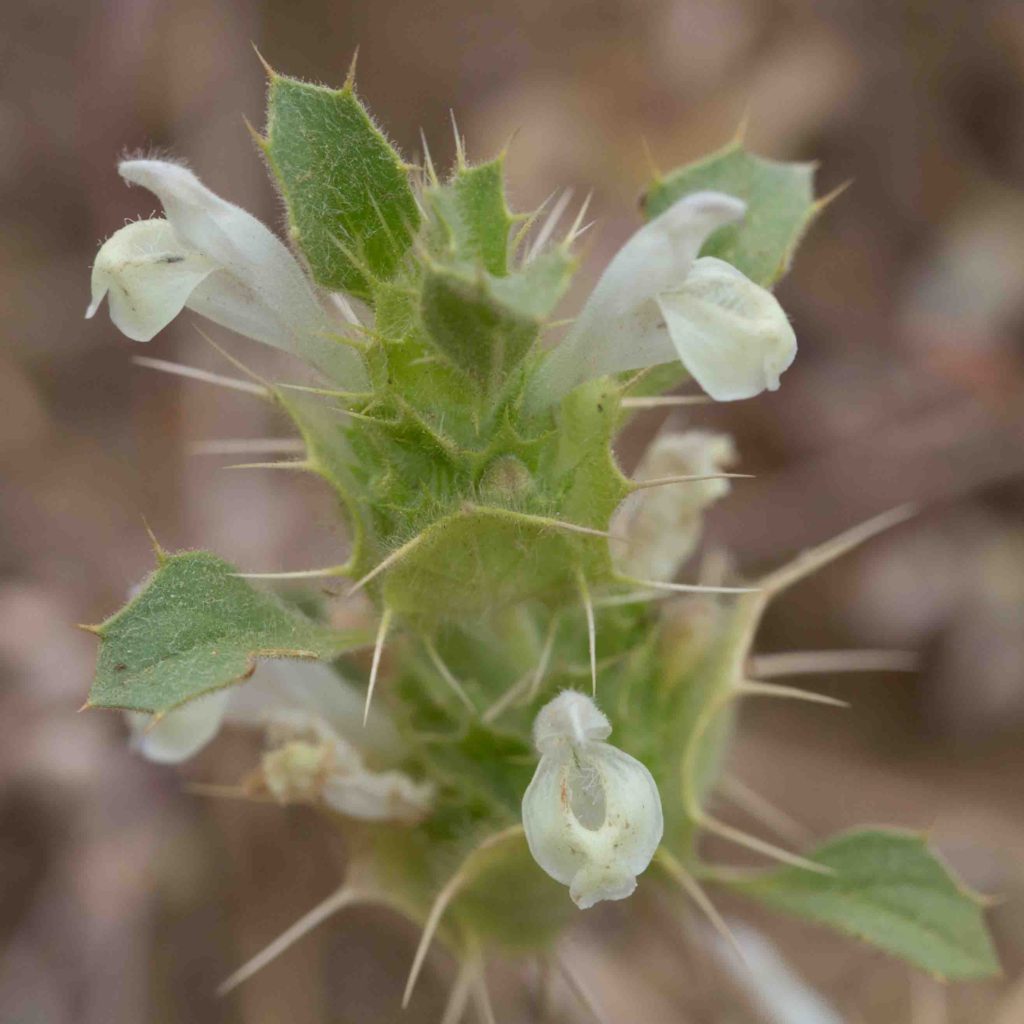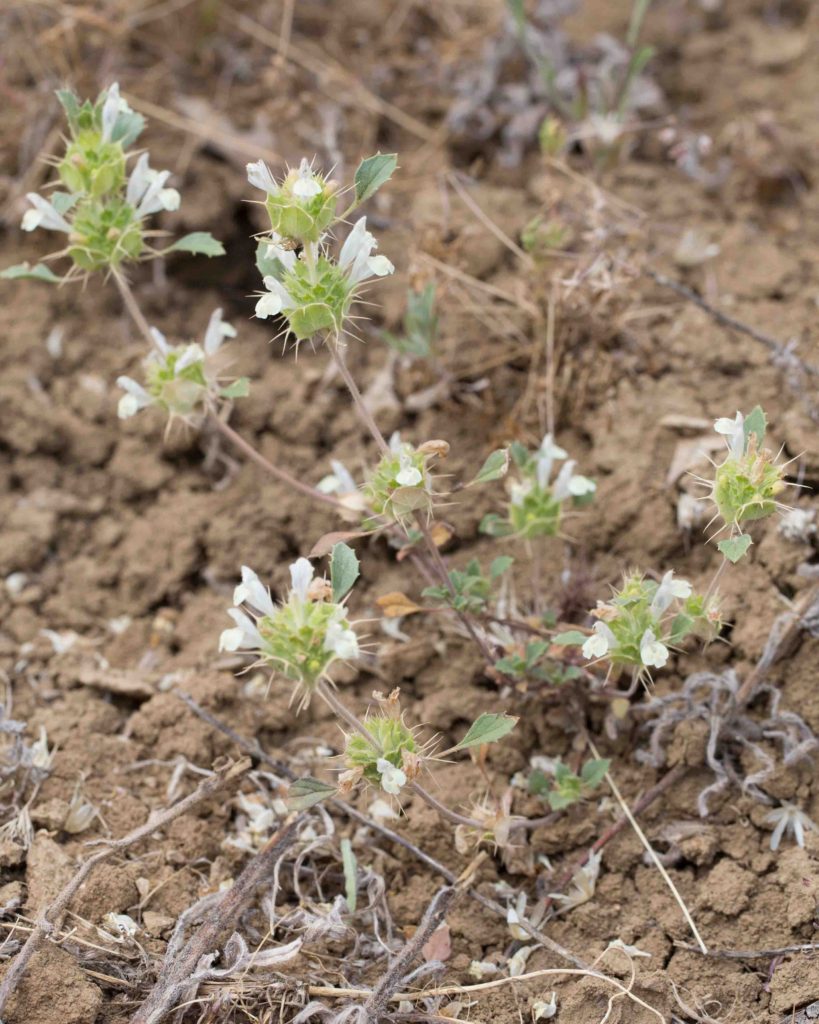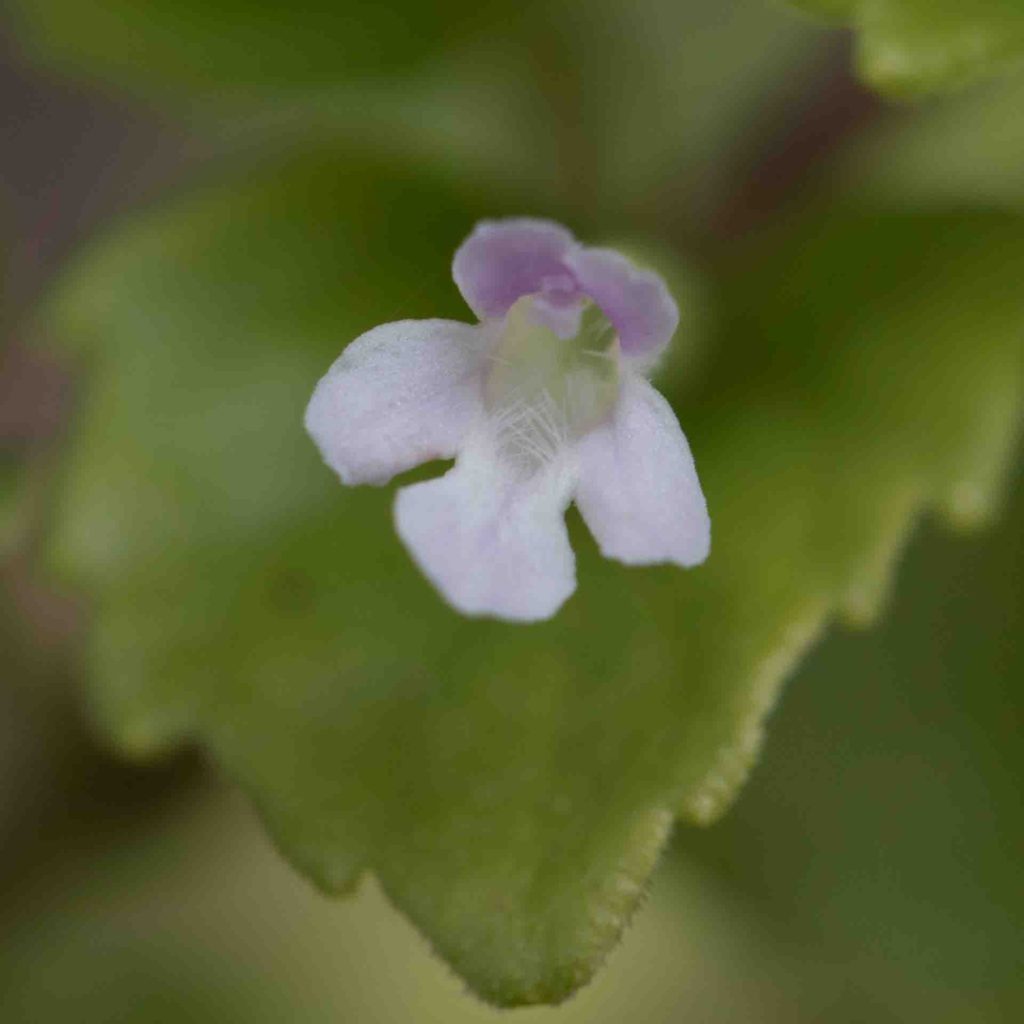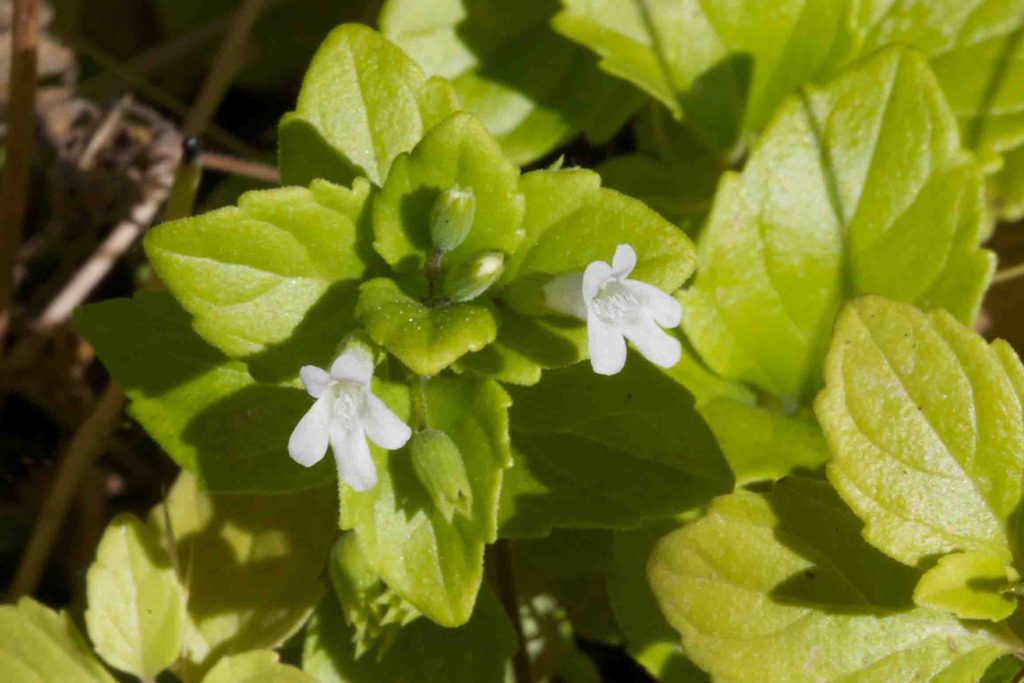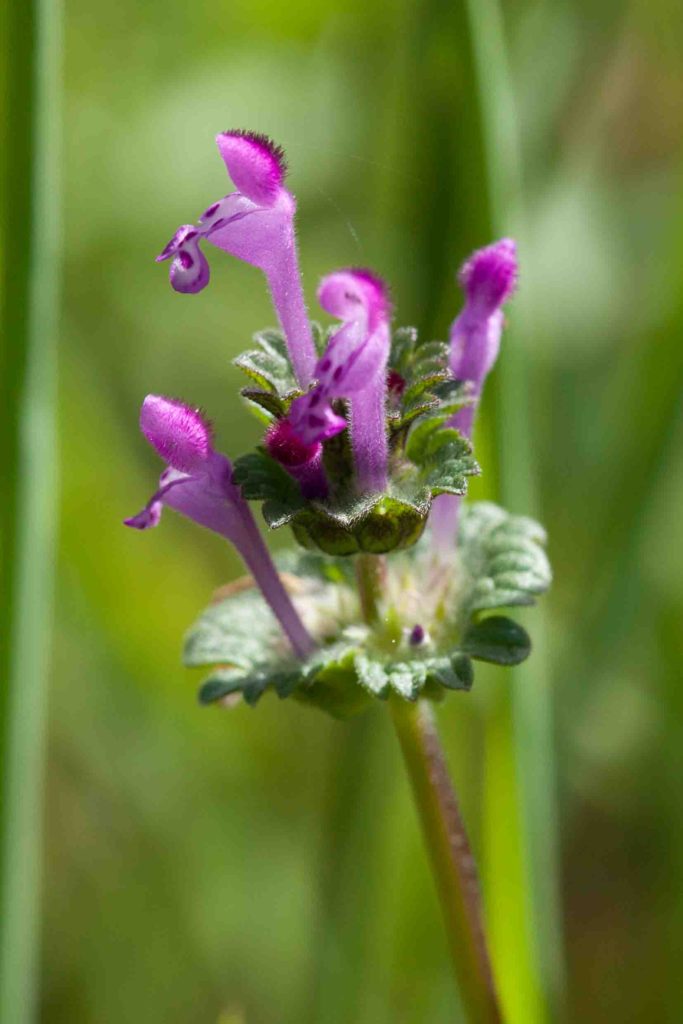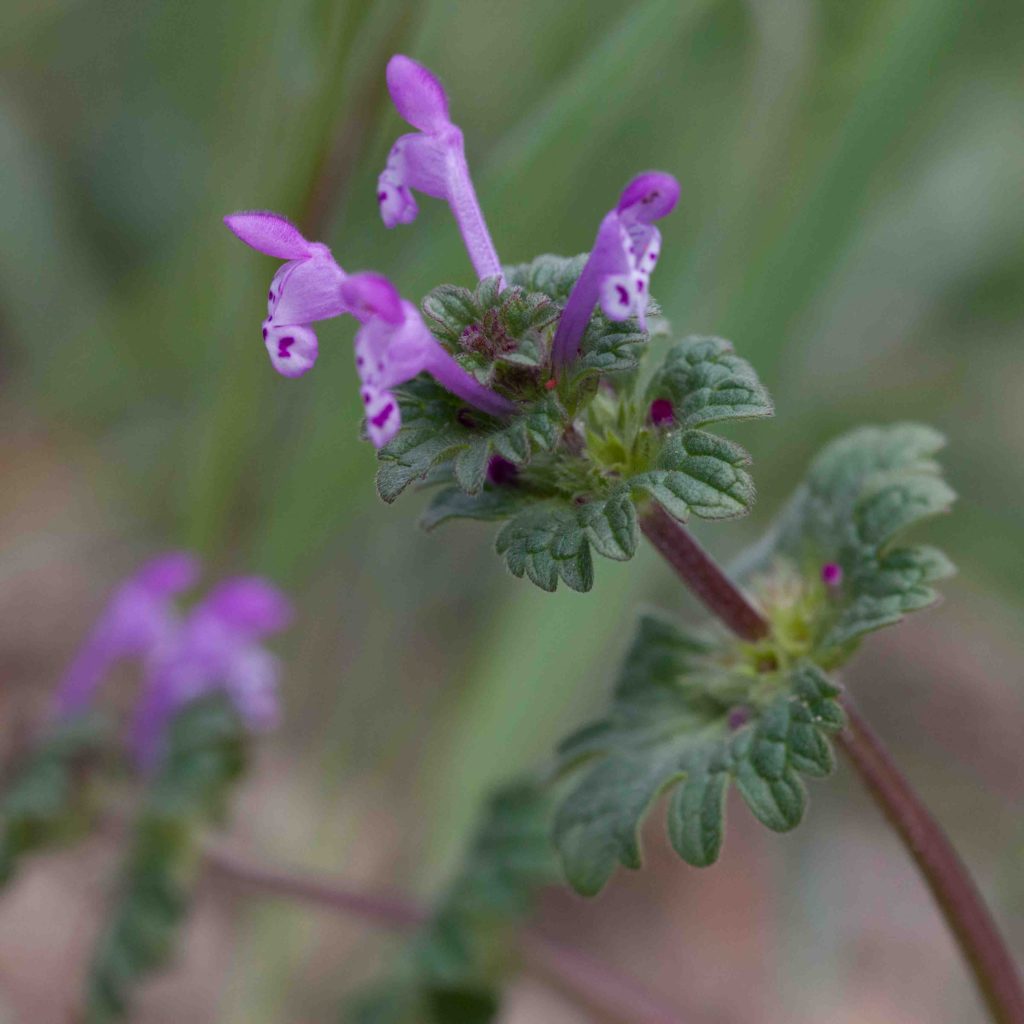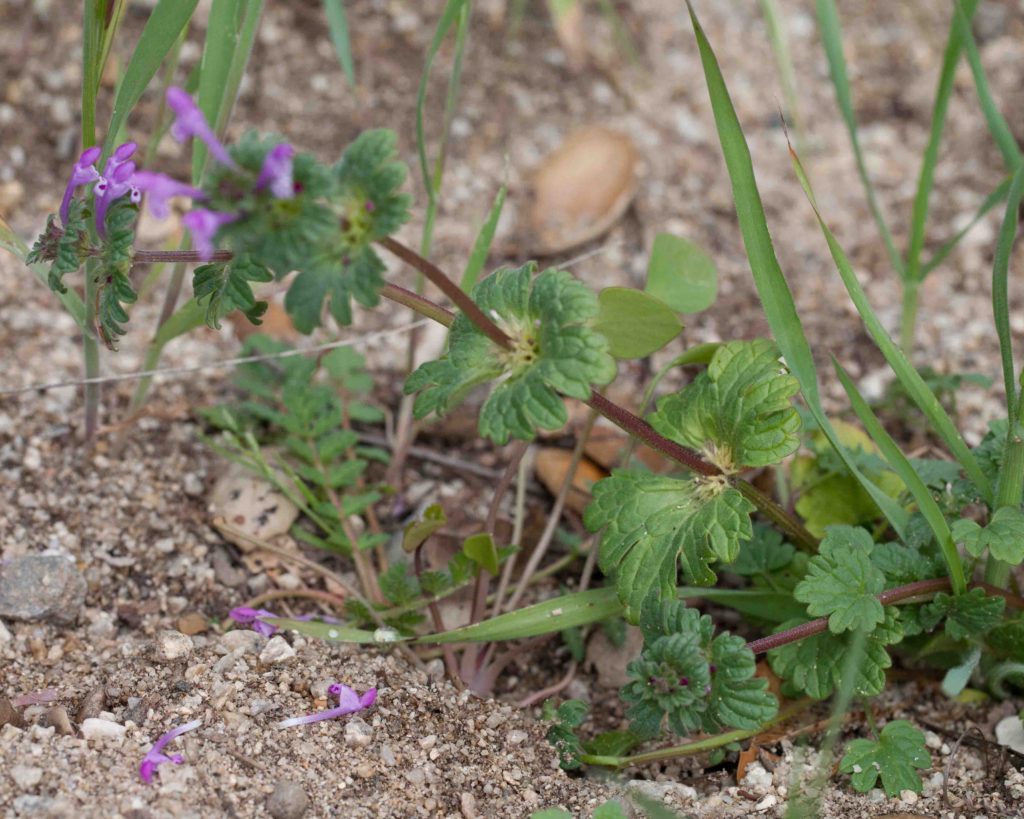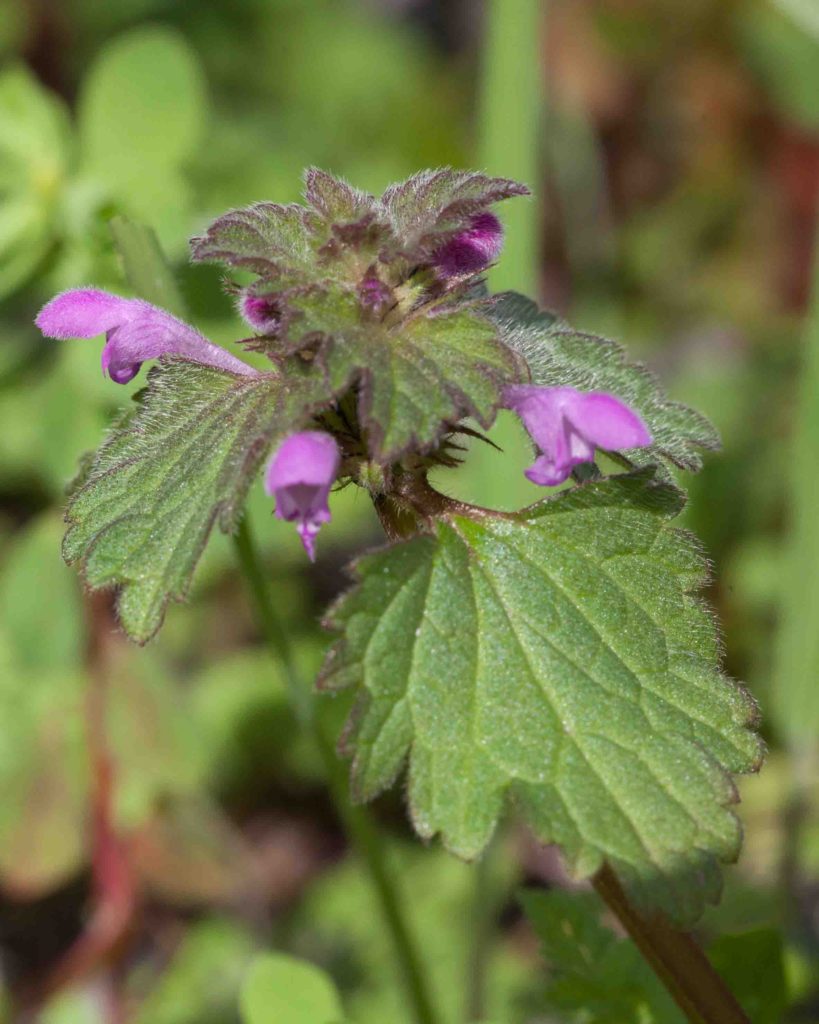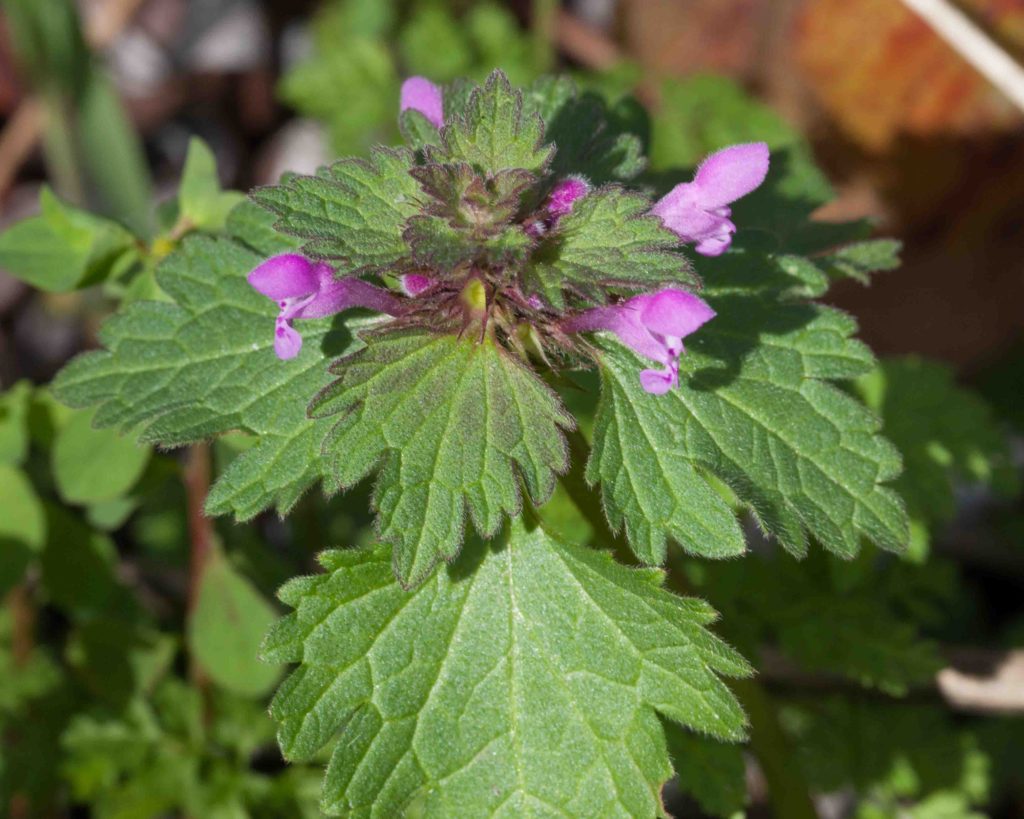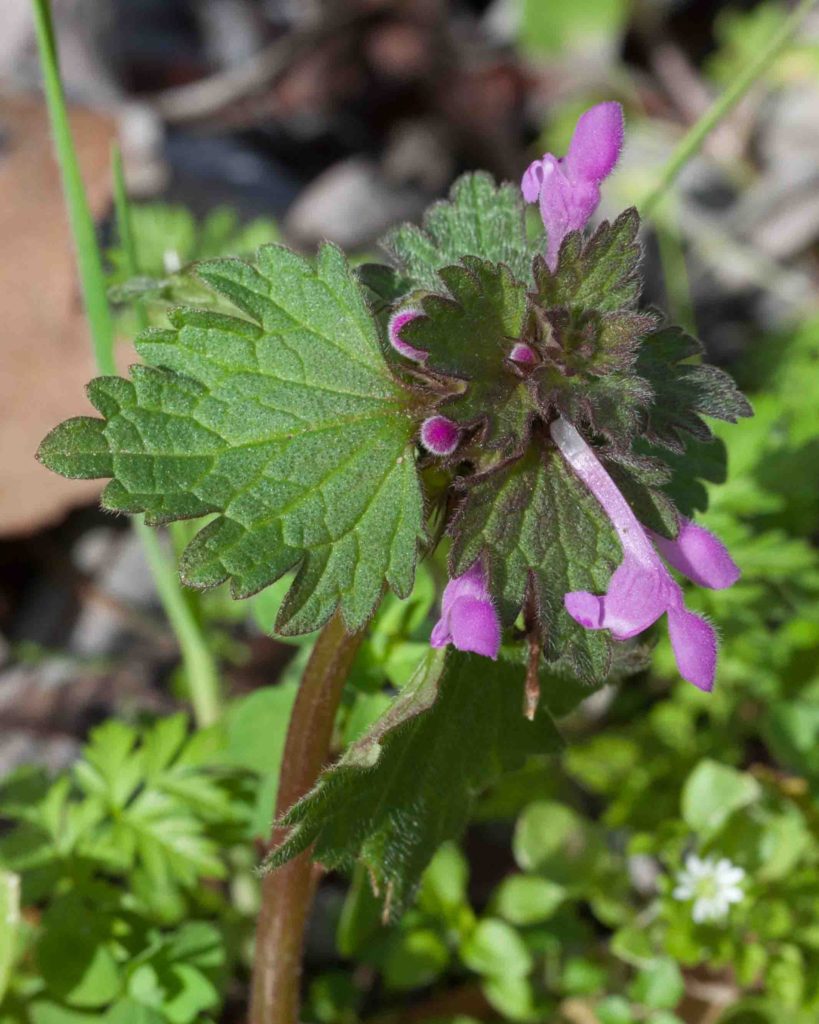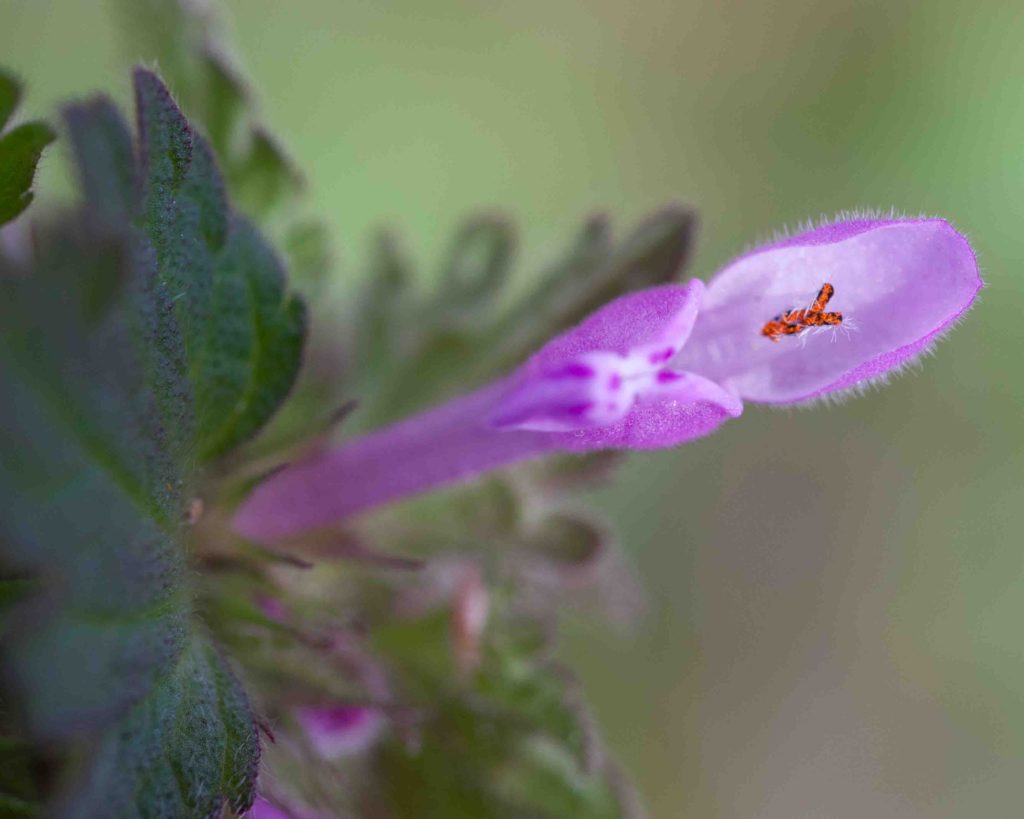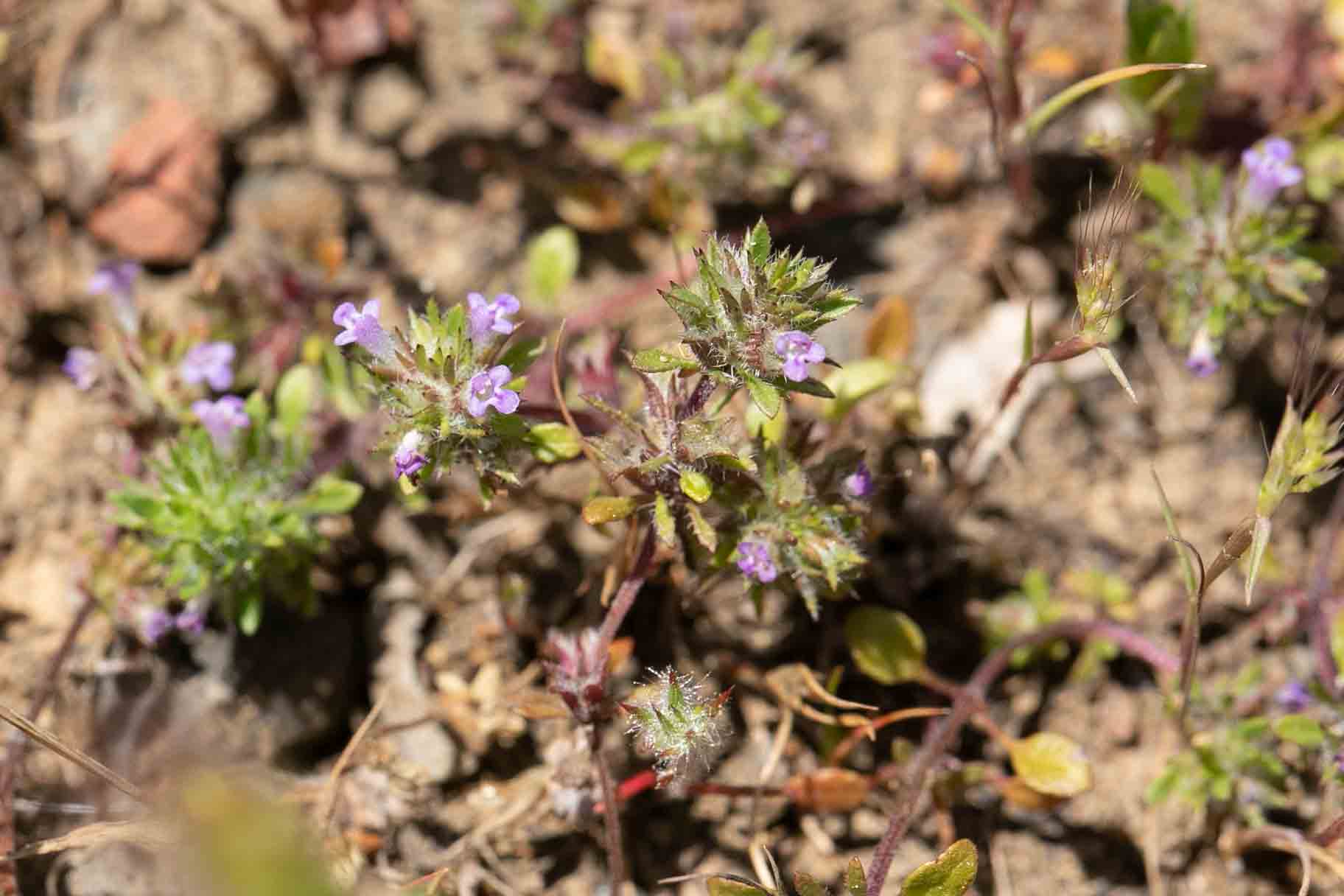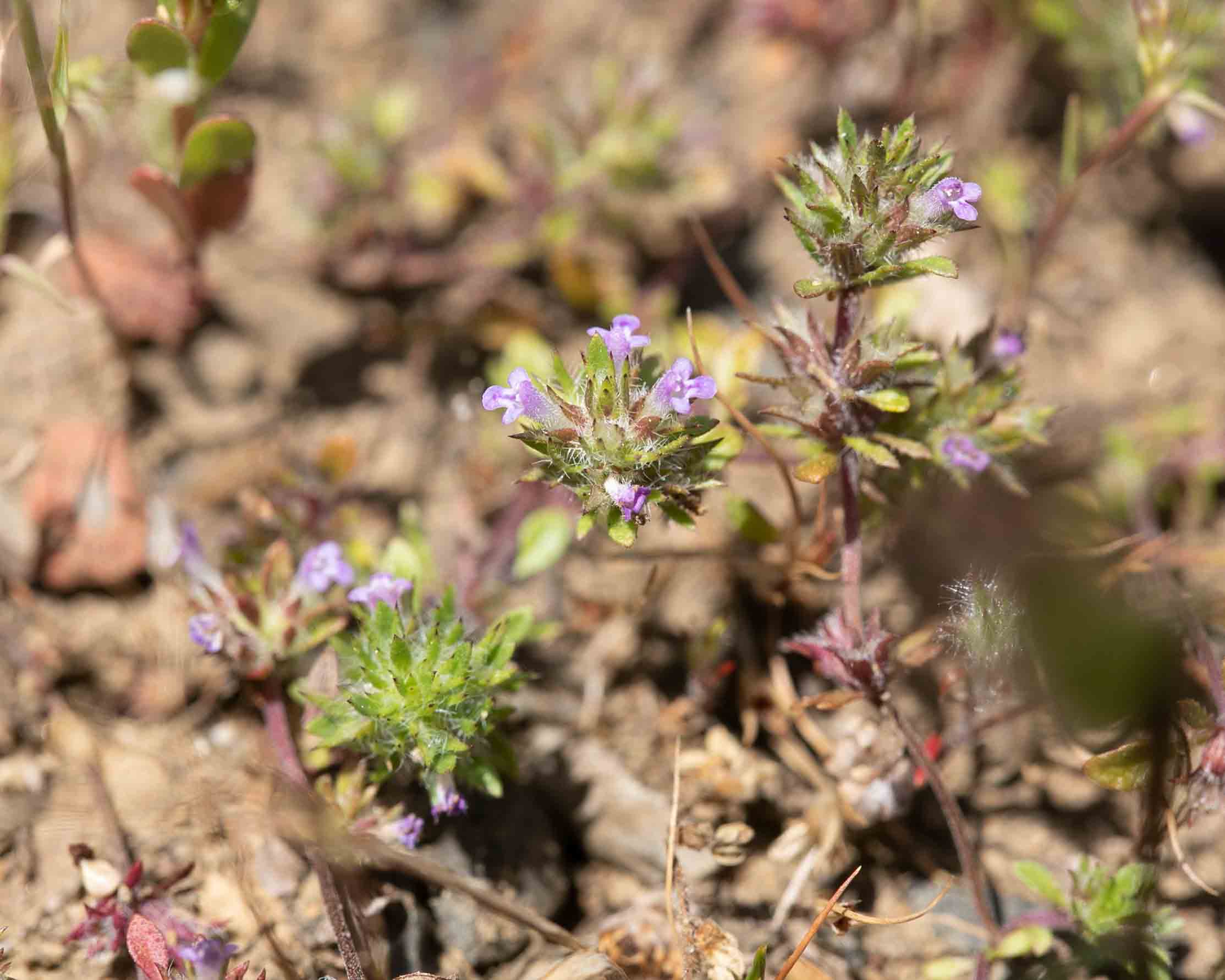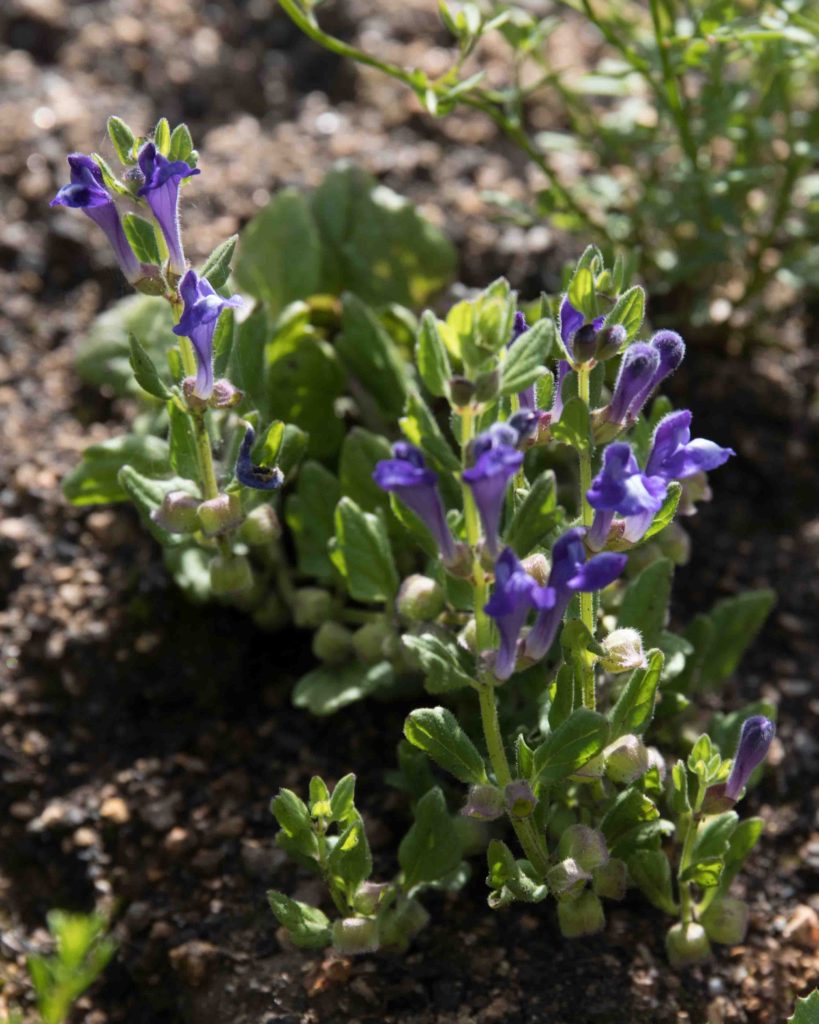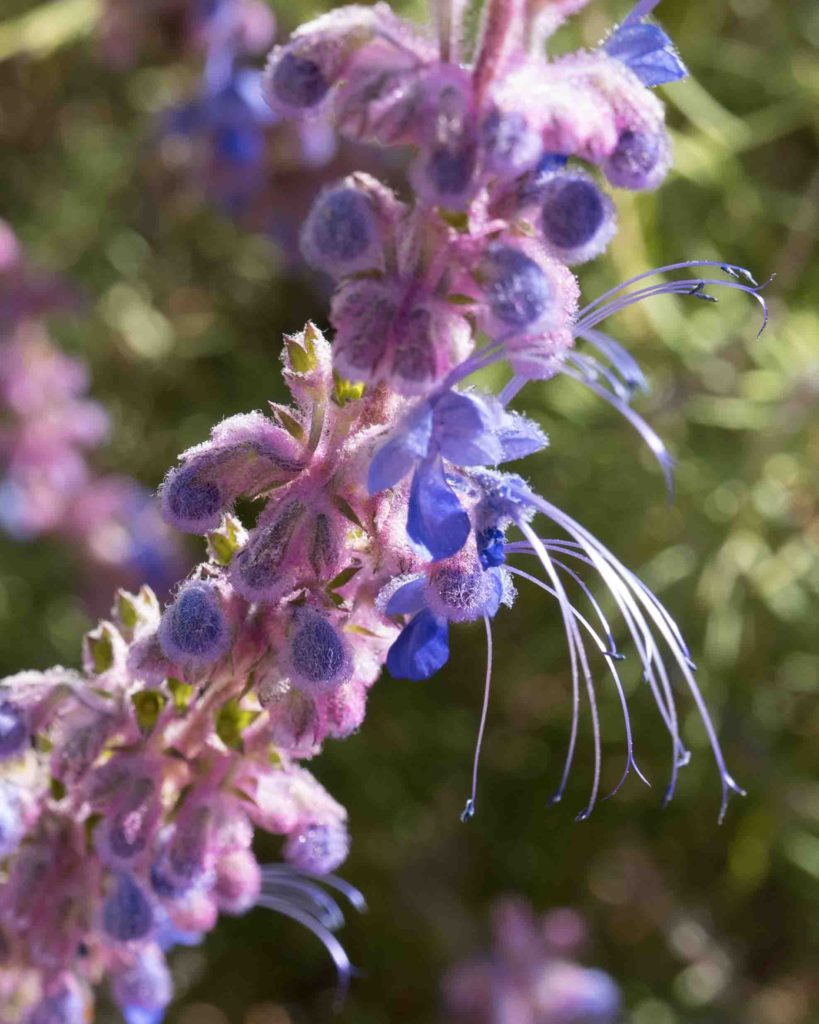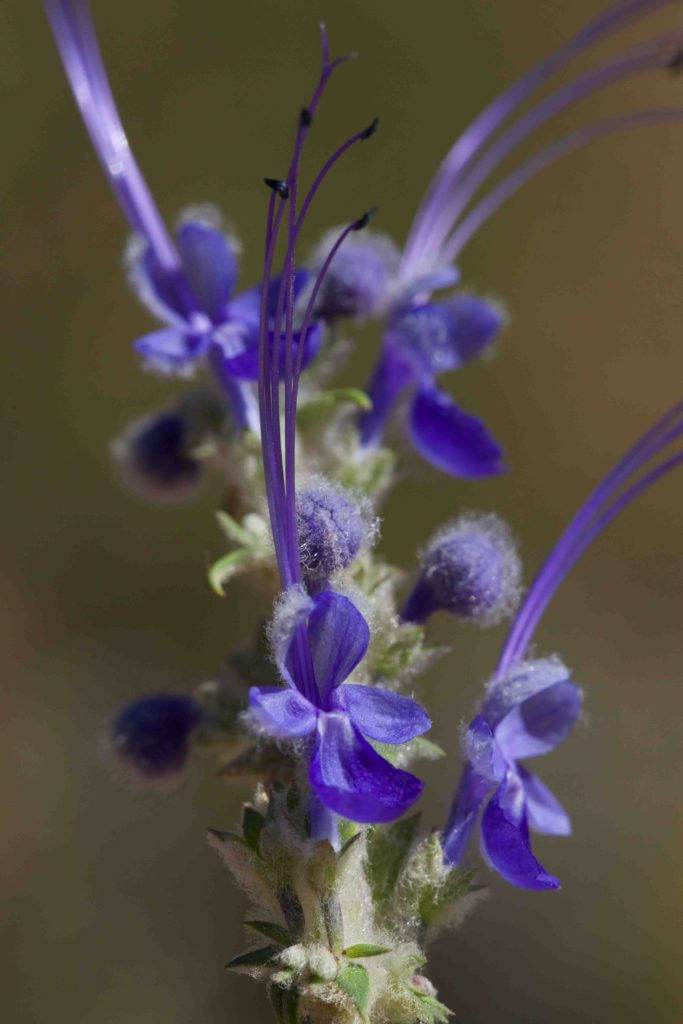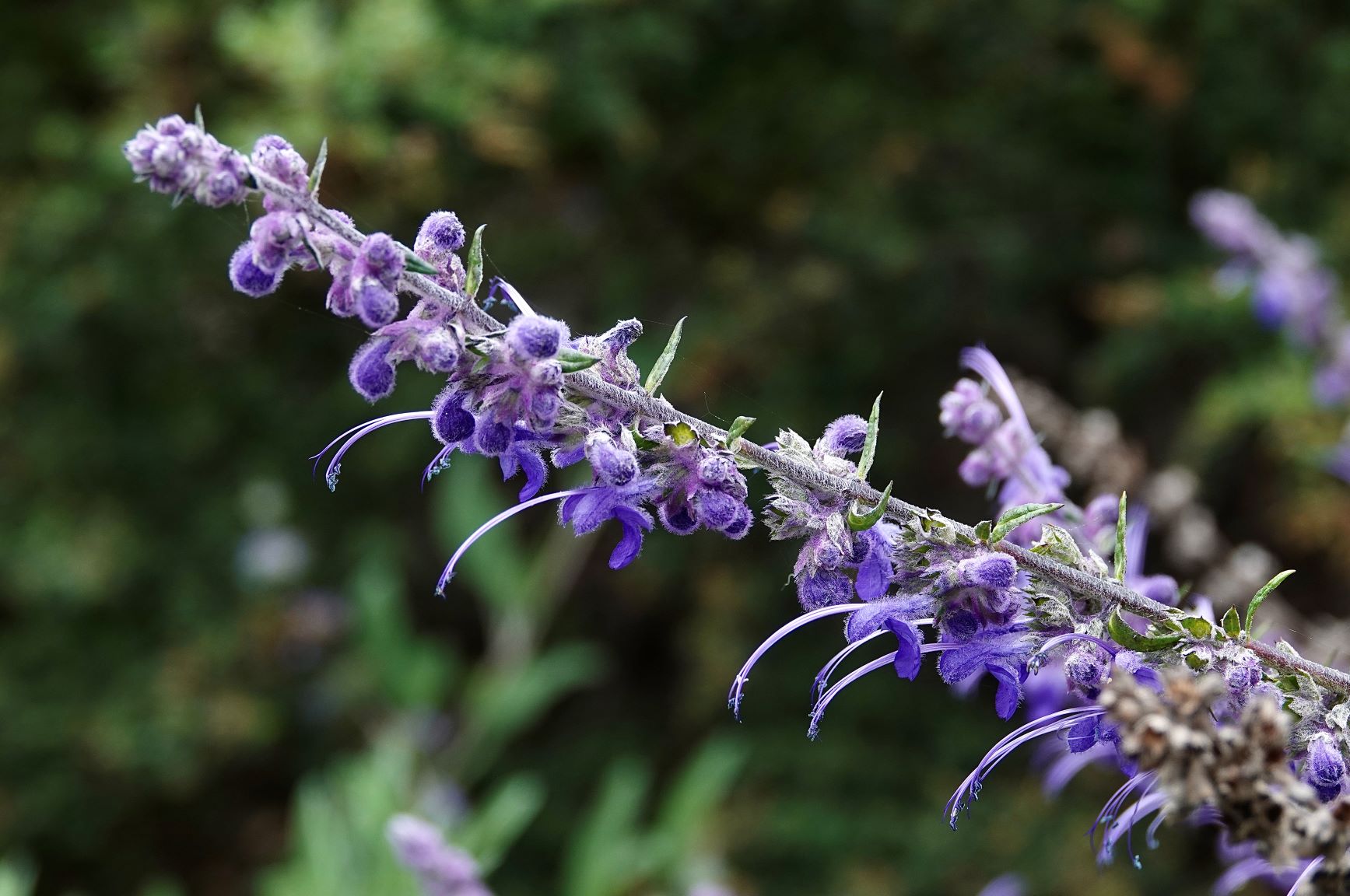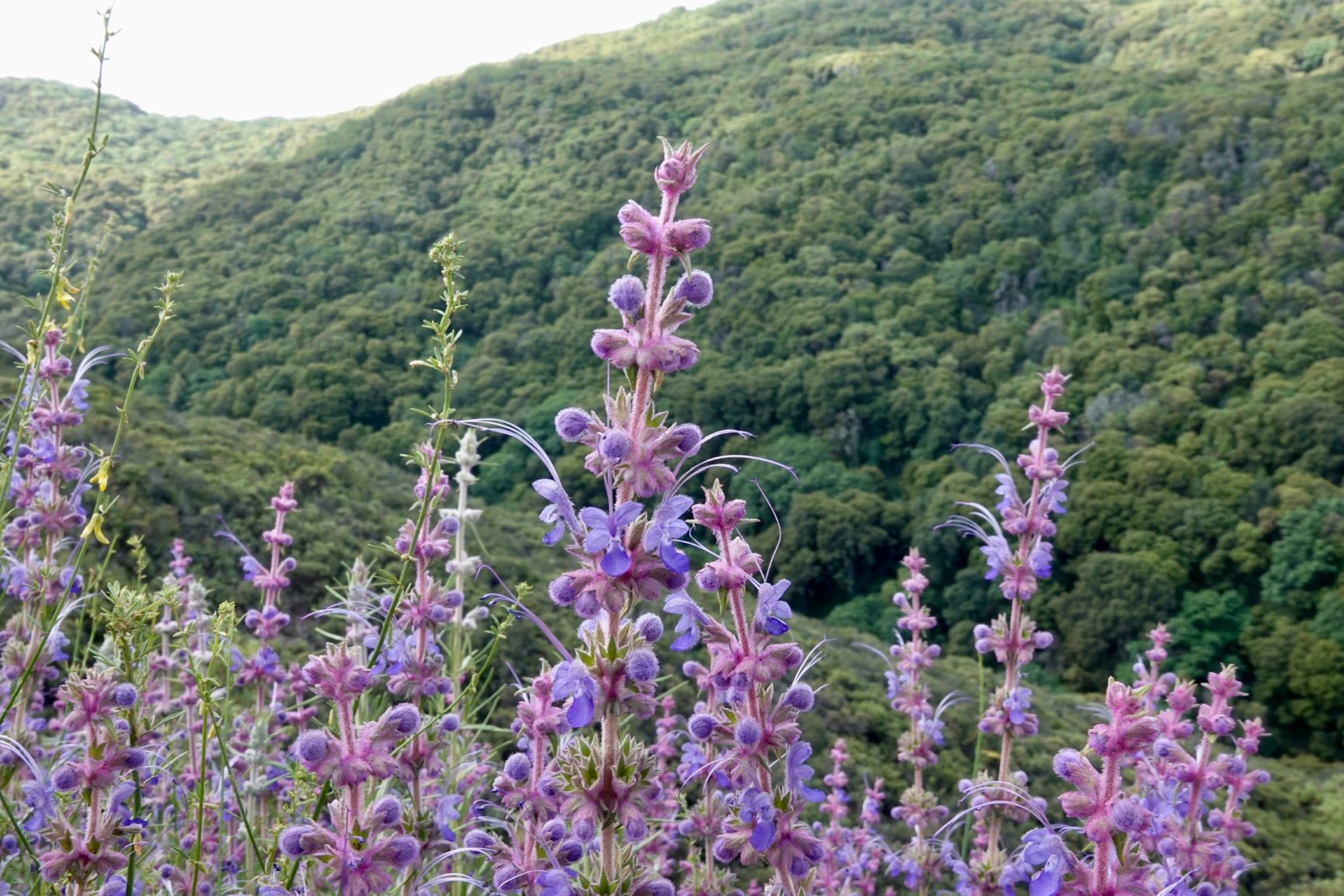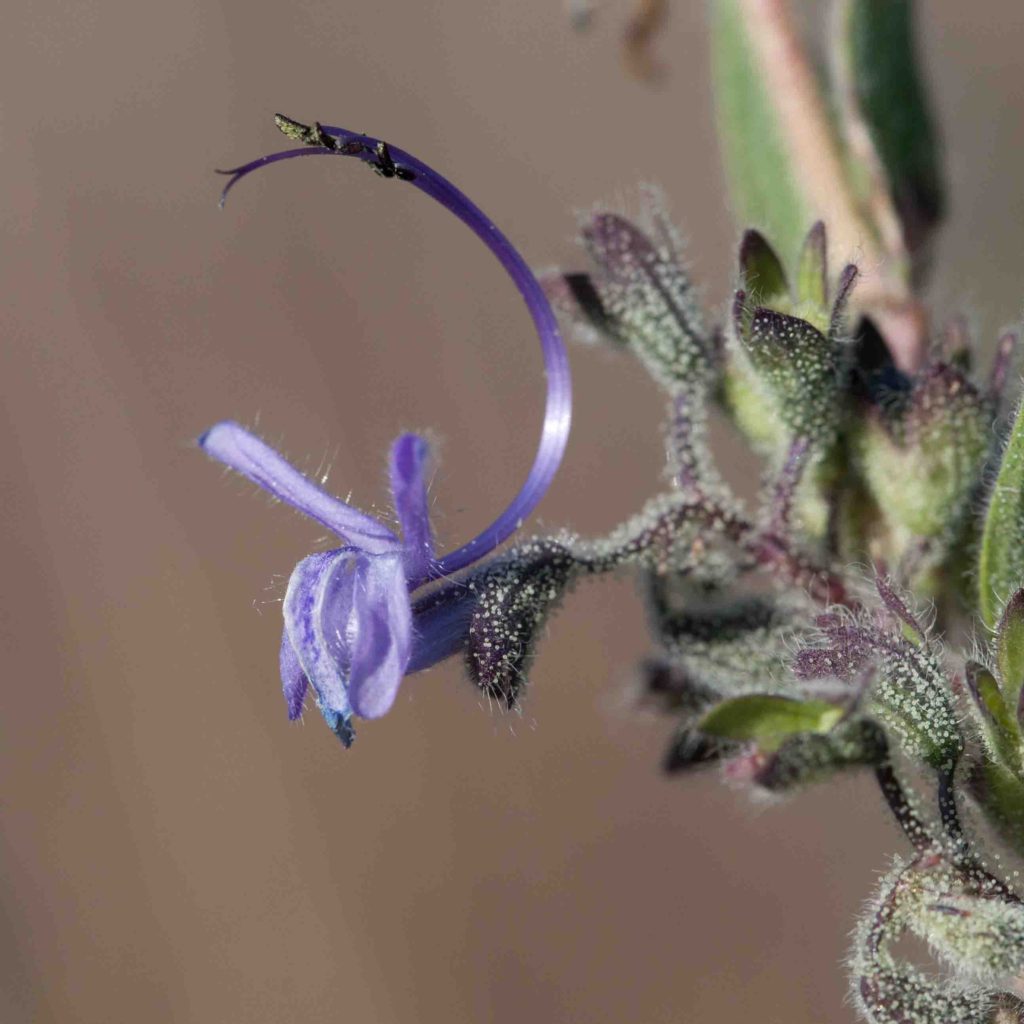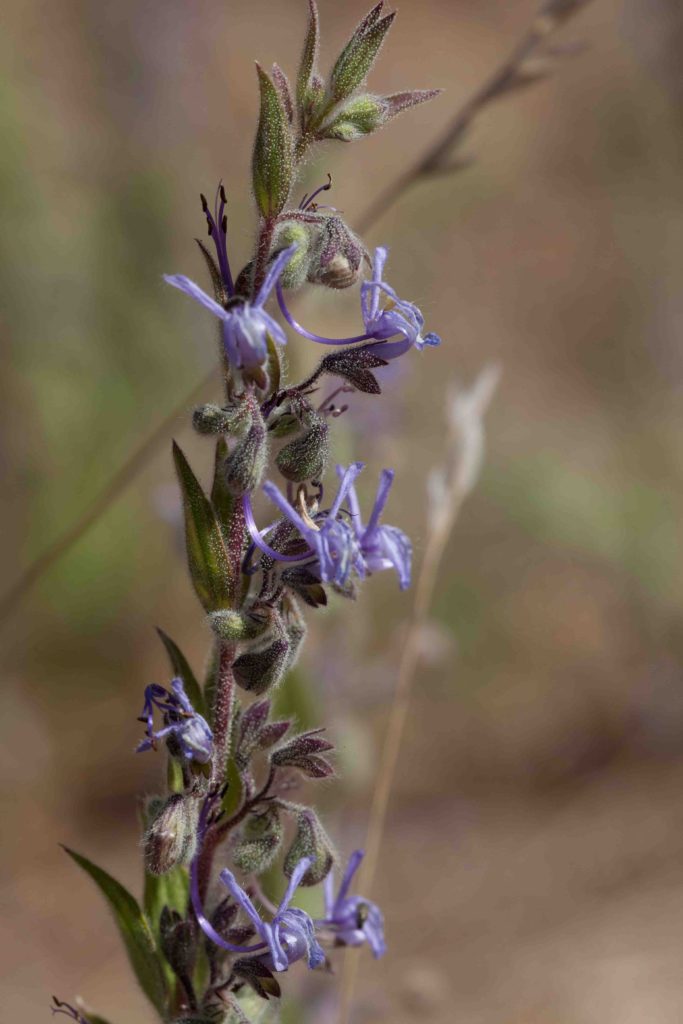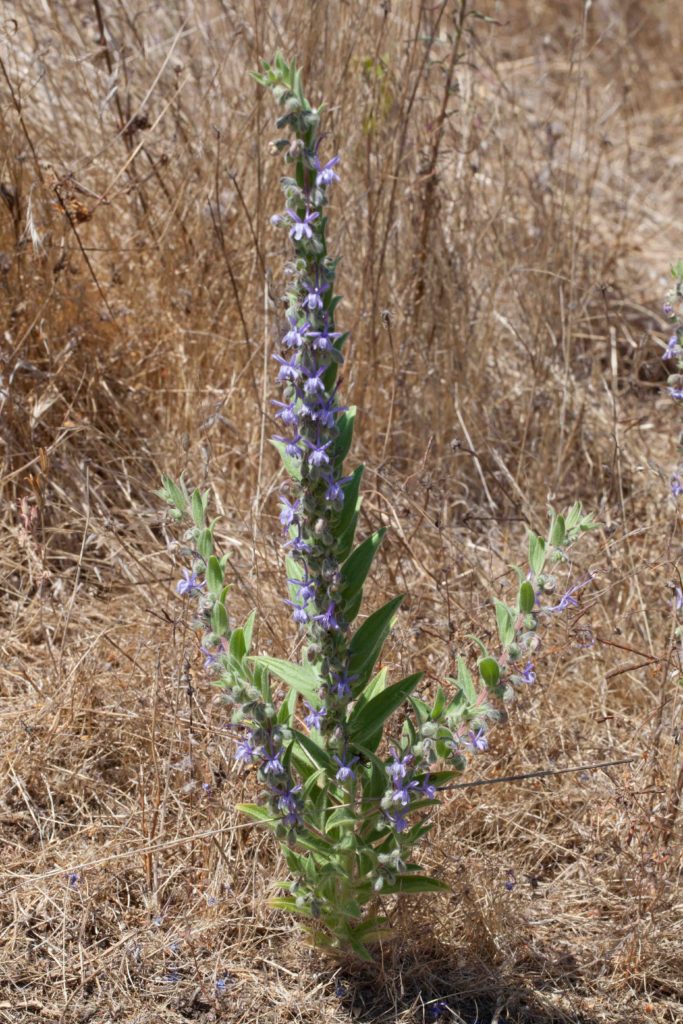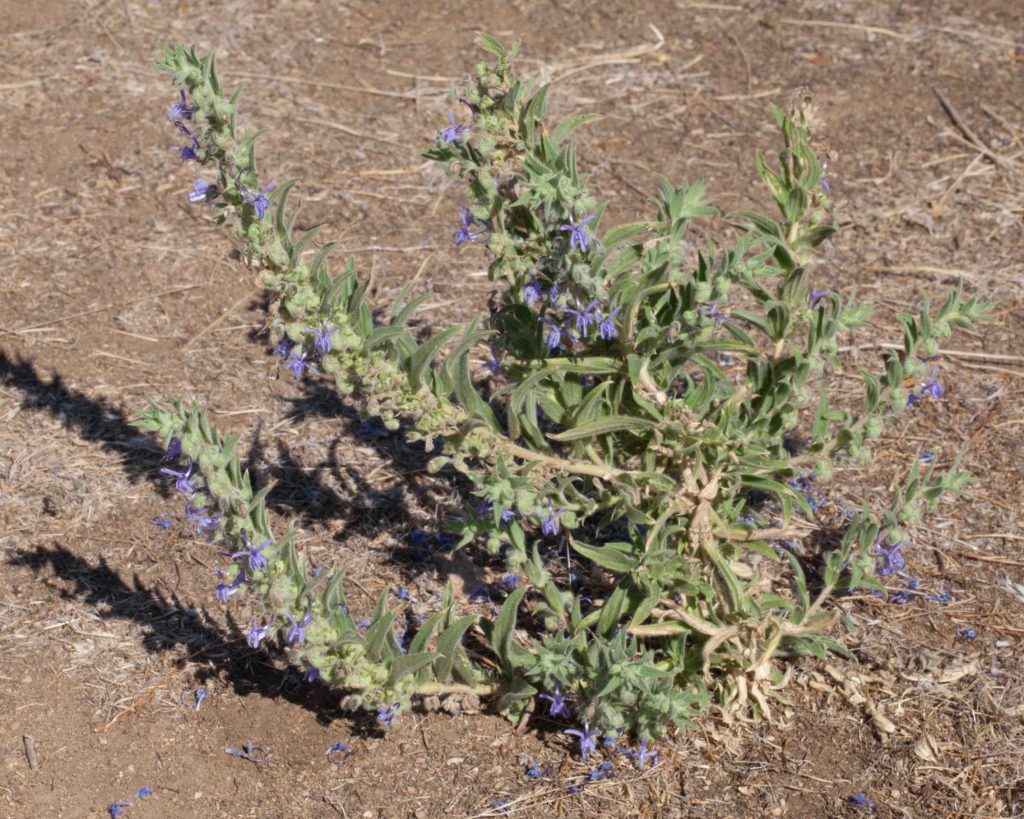Lamiaceae: Mint Family — Various
Mint family members commonly have square stems, opposite leaves and a strong fragrance. This family includes not only the mints (Mentha) and sages (Salvia), but also many of the most common culinary herbs such as rosemary, marjoram and oregano.
Santa Clara Thornmint – Acanthomintha lanceolata
Blooms:
Mar–June
Plant Height:
10–30 cm
Flower Size:
Medium
Origin:
Native
Rare or Endangered?
Yes – 4.2
Habitat:
Shale slopes on serpentine
Notes:
This and San Benito Thornmint (Acanthomintha obovata, see below) are both found on dry slopes in the south and southeast of the county. They are small, erect plants with distinctive spiny bracts and characteristic mint family hooded flowers. In this species, the upper lip is hooded and about as long as the lower lip. Anthers are glabrous, and the style is hairy (the reverse of San Benito Thornmint). The plant is soft-hairy and ill-smelling, conspicuously glandular in its upper parts.
San Benito Thornmint – Acanthomintha obovata subsp. obovata
Blooms:
Apr–July
Plant Height:
4–25 cm
Flower Size:
Medium
Origin:
Native
Rare or Endangered?
Yes – 4.2
Habitat:
Heavy clay soils or serpentine
Notes:
Like the very similar Santa Clara Thornmint (Acanthomintha lanceoata, see above), this is found on dry slopes in the south and southeast of the county. In this species, the upper lip is erect and barely hooded. Anthers are densely woolly, and the style is glabrous (the reverse of Santa Clara Thornmint). The plant is more or less glabrous, and only inconspicuously glandular.
Yerba Buena – Clinopodium douglasii
Blooms:
Apr–Sept
Plant Height:
< 10 cm
Flower Size:
Small
Origin:
Native
Habitat:
Shaded woodland
Notes:
A common but easily overlooked plant, this has delicate flowers which are pure white, generally with a pale lavender upper lip. The flower, especially its throat, is surprisingly hairy when examined closely. Leaves are ovate with rounded toothed margins and a delightful fresh minty smell.
Giraffe Head – Lamium amplexicaule
Blooms:
Jan–Sept
Plant Height:
10–40 cm
Flower Size:
Medium
Origin:
Eurasia
Habitat:
Waste & disturbed areas
Notes:
Generally found in early spring, this has unusual upright, erect, red-purple tubular flowers. If one overlooks their coloring, the flowers resemble the neck and head of a giraffe. Flowers and leaves are in whorls, the leaves completely surrounding the stem, unlike the related Red Henbit (Lamium purpureum, see below).
Red Henbit – Lamium purpureum
Blooms:
Apr–Sept
Plant Height:
10–60 cm
Flower Size:
Medium
Origin:
Europe
Habitat:
Disturbed sites or meadows
Notes:
Unlike the related and much more common Giraffe Head (Lamium amplexicaule, see above), this has tubular flowers growing more or less horizontally. Also, the leaves are larger, with more pronounced lobes and a distinct petiole. The flowers have beautiful orange, Y-shaped stamens.
Thyme-leaved Pogogyne / Beardstyle – Pogogyne serpylloides
Blooms:
Mar–June
Plant Height:
Spreading, stems 3–25 cm
Flower Size:
Very small
Origin:
Native
Habitat:
Moist grassy or brushy places
Notes:
This is an inconspicuous plant with seriously small lavender flowers, no more than 3–5 mm across, appearing in small, dense clusters. It has a slender, prostrate to decumbent stem, branched from the base. The leaves are linear to round, may be toothed, and may have bristly hairs.
The plant is not common, but fairly widespread in Monterey County. The photographs were taken on Mount Madonna in Santa Clara County.
Dannie’s Skullcap – Scutellaria tuberosa
Blooms:
Mar–July
Plant Height:
10–20 cm
Flower Size:
Small
Origin:
Native
Habitat:
Borders of brush and open woodland
Notes:
This is a small, low-growing plant with intense dark bluish-purple flowers. Its shape is reminiscent of the skullcaps worn by French revolutionaries. Leaves are < 2 cm long, and thinly hairy on both surfaces. Photos #1 – 2 by CJH.
Woolly Blue-curls – Trichostema lanatum
Blooms:
Apr–July
Plant Height:
5–15 dm
Flower Size:
Medium-large
Origin:
Native
Habitat:
Dry places
Notes:
A medium-sized shrub, with flowers borne on long spikes. Buds are woolly. The individual flowers are exceptionally beautiful, with a rich blue or pink calyx, blue-purple petals, and extraordinarily long exserted stamens. Leaves are lance-linear, green above and woolly below, with long, tangled hairs. Some fine examples will be found alongside Tassajara Road, as one climbs up toward Chews Ridge. Photos #3-4 by CJH.
Vinegar Weed – Trichostema lanceolatum
Blooms:
June–Nov
Plant Height:
1–6 dm
Flower Size:
Medium
Origin:
Native
Habitat:
Dry fields & open places
Notes:
Much smaller and less striking than the related Woolly Blue-curls (Trichostema lanatum, see above), this has smaller but distinctive bluish-purple flowers. It has strongly curved and exserted, fused stamens and pistils, extending from the U-shaped flower tube. The foliage is exceptionally glandular, the glands containing a volatile oil that releases a strong vinegary aroma on warm late-summer days, especially when touched, but even when not. The cultivated Rosemary, another member of the Mint family, has smaller but surprisingly similar-looking flowers.
